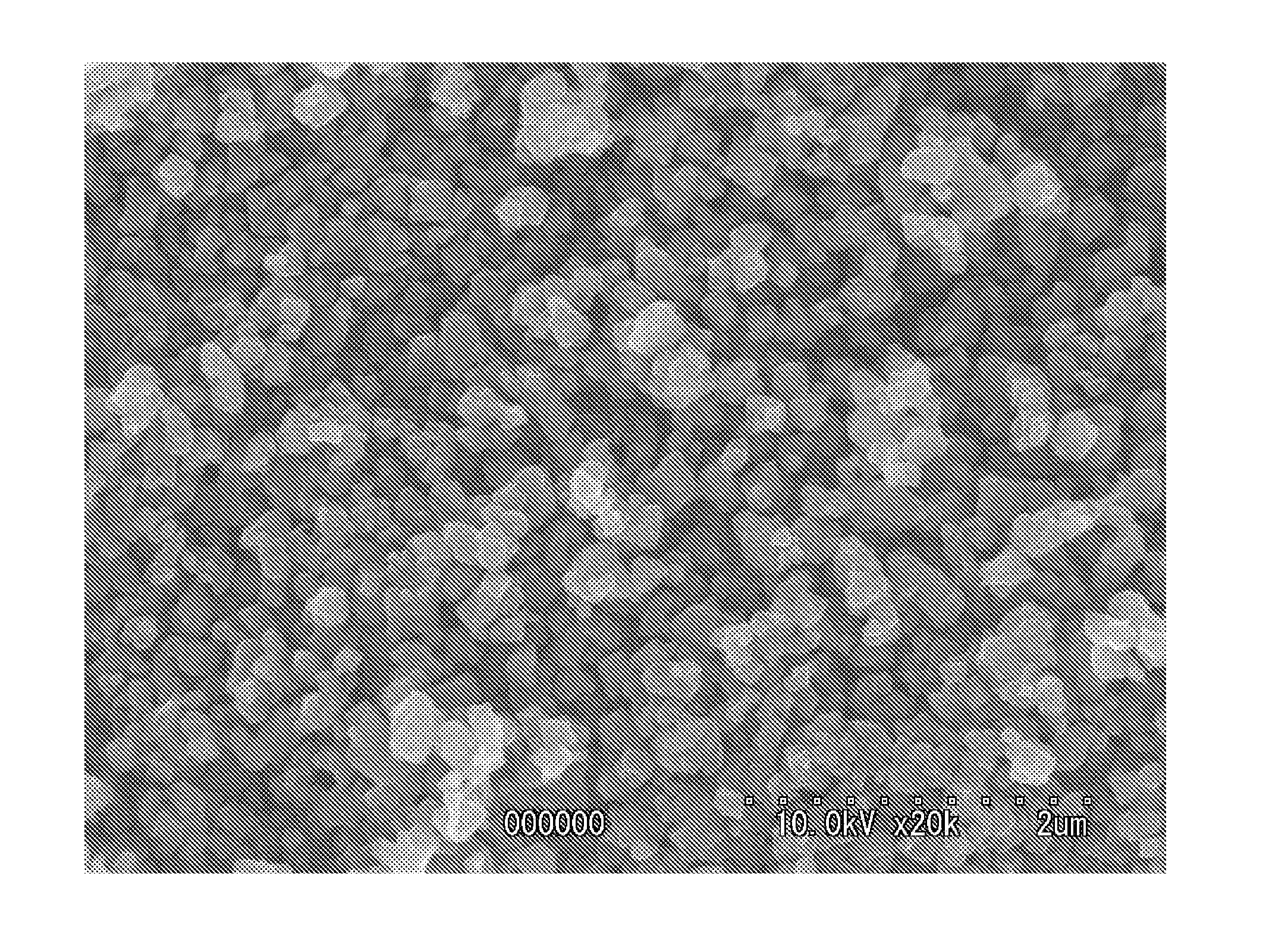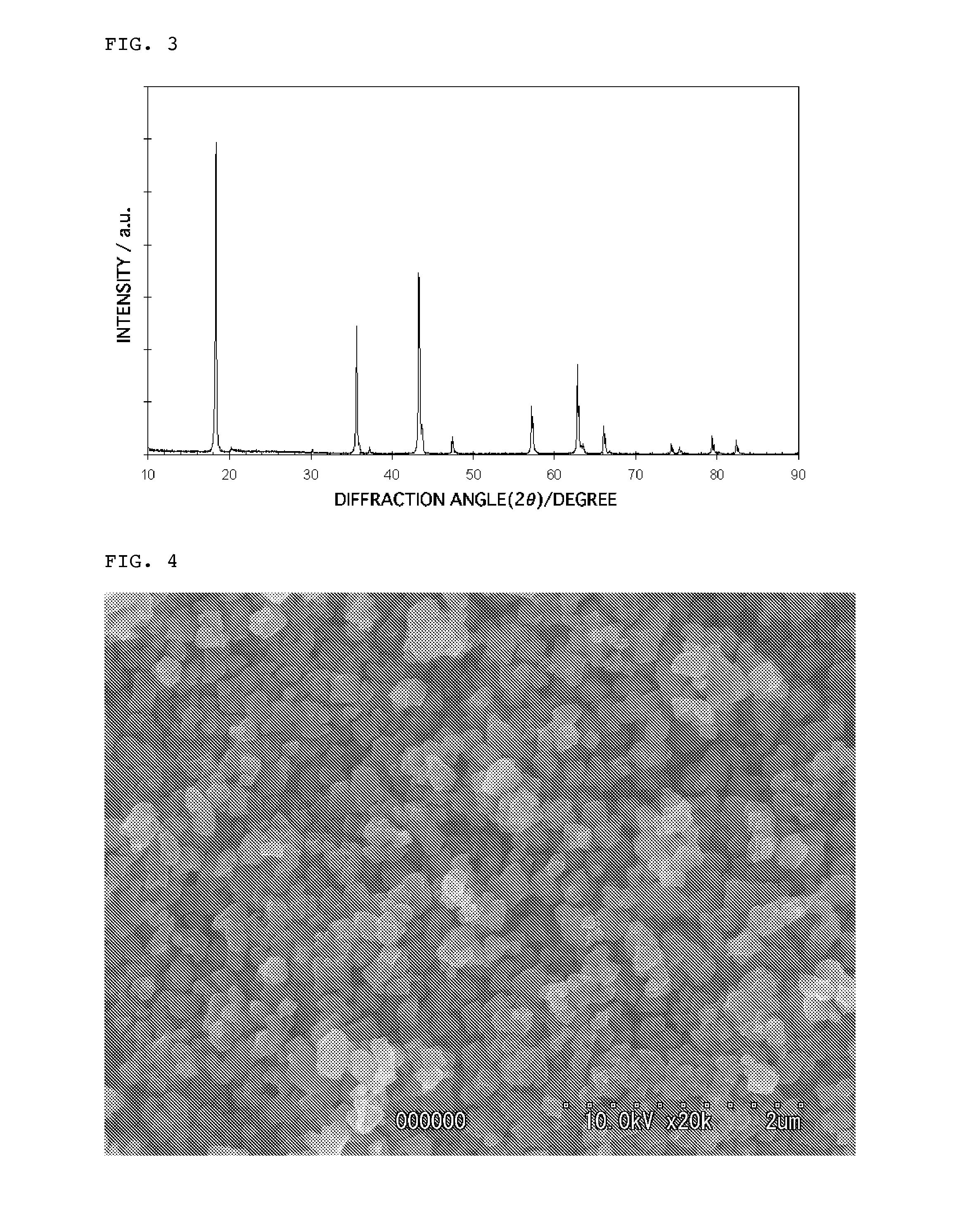Lithium titanate particles and process for producing the lithium titante particles, MG-Containing lithium titanate particles and process for producing the MG-Containing lithium particles, negative electrode active substance particles for non-aqueous electrolyte secondary batteries, and non-aqeous electrolyte secondary battery
a technology of lithium titanate and lithium titanate, which is applied in the direction of alkali titanates, sustainable manufacturing/processing, non-metal conductors, etc., can solve the problem of low retention rate of high-efficiency discharge capacity, and achieve excellent initial discharge capacity, high output characteristic, and well-balanced battery characteristics
- Summary
- Abstract
- Description
- Claims
- Application Information
AI Technical Summary
Benefits of technology
Problems solved by technology
Method used
Image
Examples
example 1-1
[0239]Titanium oxide having a specific surface area of 10 m2 / g and a primary particle diameter of 180 nm and lithium hydroxide were mixed with each other such that a molar ratio of Li / Ti was 1.4 to prepare a reaction suspension, and the resulting reaction suspension was heated to 85° C. and stirred at that temperature for 12 hr. Thereafter, the reaction suspension was filtered, and the resulting filter cake was dried at 120° C. As a result of subjecting the thus obtained dry particles to X-ray diffraction analysis, it was confirmed that the particles were in the form of a mixture comprising at least Li2TiO3 and TiO2.
[0240]The dry particles were placed in an alumina crucible and calcined in a muffle furnace at a temperature of 760° C. for 4 hr in an atmospheric air to obtain lithium titanate particles.
examples 1-2 to 1-5
and Comparative Examples 1-1 to 1-5
[0241]The same procedure as in Example 1-1 was conducted except that the kind of titanium oxide, Li / Ti molar ratio, reaction temperature, reaction time and calcination temperature were changed variously, thereby obtaining lithium titanate particles.
example 1-6
[0242]Titanium oxide having a specific surface area of 10 m2 / g and a primary particle diameter of 180 nm and lithium hydroxide were mixed with each other such that a molar ratio of Li / Ti was 2.5 to prepare a reaction suspension, and the resulting reaction suspension was charged into an autoclave, heated therein to 175° C. and stirred at that temperature for 8 hr. Thereafter, the reaction suspension was filtered, and the resulting filter cake was dried at 120° C.
[0243]As a result of subjecting the thus obtained dry particles to X-ray diffraction analysis, it was confirmed that the particles had an Li2TiO3 single phase.
[0244]The thus obtained Li2TiO3 particles were mixed with titanium oxide having a specific surface area of 344 m2 / g and a primary particle diameter of 5 nm such that a molar ratio of Li / Ti was 0.84 to prepare mixed particles. The resulting mixed particles were placed in an alumina crucible and calcined in a muffle furnace at a temperature of 780° C. for 4 hr in an atmos...
PUM
| Property | Measurement | Unit |
|---|---|---|
| specific surface area | aaaaa | aaaaa |
| molar ratio | aaaaa | aaaaa |
| temperature | aaaaa | aaaaa |
Abstract
Description
Claims
Application Information
 Login to View More
Login to View More - R&D
- Intellectual Property
- Life Sciences
- Materials
- Tech Scout
- Unparalleled Data Quality
- Higher Quality Content
- 60% Fewer Hallucinations
Browse by: Latest US Patents, China's latest patents, Technical Efficacy Thesaurus, Application Domain, Technology Topic, Popular Technical Reports.
© 2025 PatSnap. All rights reserved.Legal|Privacy policy|Modern Slavery Act Transparency Statement|Sitemap|About US| Contact US: help@patsnap.com



